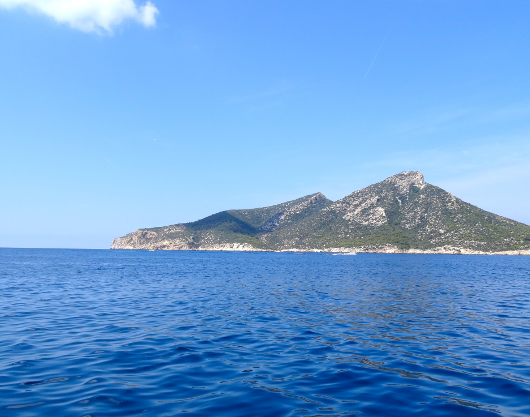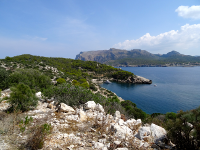Spain: Protecting the flora of Sa Dragonera
07.09.13

The little, uninhabited island of Sa Dragonera is 3.2km long and located about 780m off the south-west coast of Mallorca, in the Balearic Islands. It forms a continuation of the Tramuntana mountain range that dissects the main island and rises from the sea with sheer, vertical cliffs, tiny coves and sea caves. Sa Dragonera is covered with characteristic Mediterranean garrigue vegetation, an open community of small, mainly evergreen shrubs and a great variety of associated herbaceous plants like the Autumn Arum, Arum pictum, the beautiful orchid, Anacamptis pyramidalis, and a multitude of annuals and bulb species which are very colourful in spring. Mediterranean garrigue vegetation is extremely important as it is the last defence against soil erosion and eventual desertification.
Like most Mediterranean coastal lands, Sa Dragonera was once covered in dense stands of pine trees, Pinus halepensis, but these were mostly cut down and cleared for fuel when the island was privately owned. However, the pines are beginning to reappear and increase in number since the island became a Natural Reserve in 1995, after being purchased by the Mallorca Island Government..
With the exception of winter months, visitors are welcome to explore the island so long as they respect this fragile and unique environment. They are asked to keep to the designated paths and lanes that criss-cross the island; not to light fires or leave rubbish behind them and not to feed the lizards that are numerous on the island. These are the endangered Podarcis liffordi, sadly no longer found on the main islands.
 Some of the shrubs you will find here include the aromatic Hypericum balearicum, spiny mounds of Launaea cervicornis, wild rosemary, Rosmarinus officinalis, the graceful Tamarix africana, and the Tree Spurge, Euphobia dendroides which is summer deciduous and turns a beautiful shade of red in spring before losing its leaves to conserve water.
Some of the shrubs you will find here include the aromatic Hypericum balearicum, spiny mounds of Launaea cervicornis, wild rosemary, Rosmarinus officinalis, the graceful Tamarix africana, and the Tree Spurge, Euphobia dendroides which is summer deciduous and turns a beautiful shade of red in spring before losing its leaves to conserve water.
Many plants can be seen on cliffs and steep rocky outcrops where herbivores are unable to reach them - plants like the wild cabbage, Brassica balearica, taking advantage of fissures in the rocks to enable root systems to establish in these well-drained situations. The sweetly-scented Horse-shoe vetch found here, Hippocrepis balearica was originally a plant of high woodland but has been carried down to lower slopes in torrents and screes where it has colonized dry, rocky places and cliffs.
There are some rare plant species on the island that need protection so the Botanical Garden of Soller in the north-west of Mallorca has been undertaking conservation activities there. In their seed bank they keep a collection of seed from plant populations on the island and they have been mapping all the vegetation. They have also been involved in designing and making a little garden to display some of the rarer species of island flora for visitors.
If you would like more information about Balearic plants and the work of the Botanical Garden of Soller, go to: www.jardibotanicodesoller.org
Photographs copyright of N.Vingoe and H. Walker